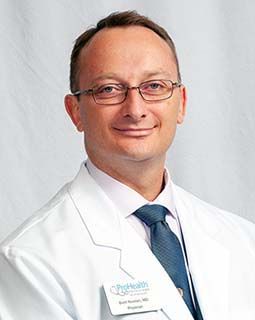Article
Brett Nowlan, MD: My Year Working During a Pandemic
Author(s):
A lipidologist from Connecticut describes his experience during the COVID-19 pandemic and explains why he sees getting the vaccine as his "biggest contribution" to healthcare during the pandemic.
Brett Nowlan, MD

An original version of this article was published in Practical Cardiology.
I received my COVID-19 vaccination today.
It was a well-organized process. I received emails, registered, and booked a date and time. The check-in and screening were smooth, and after a brief wait, I was up. I am part of the first phase of vaccinations, and so not many anecdotal reports to go on—some with sore shoulders; one colleague with a 24-hour febrile reaction.
My injection did not hurt at all. No noticeable reaction in the days following. And just like that, it finally feels like there is a light at the end of the tunnel that is the COVID-19 pandemic. It feels like a lifetime ago that news of a novel virus was beginning to spread around the world.
In our era of news as entertainment, at first it seemed to be overblown and overstated. Then Italy became bad. Then New York City reported cases. Then New York became bad. I have family members who live in Queens, and almost all of them contracted it, although luckily had mild enough cases to not need hospital care. But the daily reports were harrowing, and for the rest of us it was clearly just a matter of time.
I work in a private cardiology practice in Connecticut, and cover our admitting hospital for a week at a time. Suddenly nothing seemed clear, or safe. In our office, we had a series of hastily assembled partner meetings, and then again with our staff, planning our defense. There was suddenly a hunt for PPE, and screening protocols, and quick adoption of a telehealth platform; but still mostly uncertainty.
Our local hospital numbers spiked, and all of the complications we had read about were now in our hands. Hypoxia, and thrombosis, and widespread inflammation, and rapid decompensation. Colleagues started getting infected. Some died.
I was now coming home directly into our garage, stripping off, putting all my non-clothing items into a UV sterilizing oven, and then showering, before greeting my family. Schools closed. Roads were quiet. Even grocery shopping felt hazardous. We never closed our office, but our volume dipped significantly, and now every in-person visit and hospitalization for a cardiac issue came with an additional gamble of infection.
I am fortunate to live in an area where most were taking the pandemic, and it’s restrictions, seriously. Without overwhelming our healthcare facilities, numbers came down, and we all carried on. We are now in the midst of another surge, due to multiple shortcomings - leadership, planning, insight, trust, resolve. It feels different in our office and in the hospital though.
We know more, and there is at least a degree of predictability and familiarity now. Our office volume is busier than ever, as most patients realize we are in this predicament for the long haul. And now there is a vaccine.
In a frustrating time of science and expertise denial, scientists and experts have accomplished a massive flex, and we have a way out. History now awaits our decision on whether to accept this or not. For how little I have been able to help those with COVID-19 up to this point, my biggest contribution as a healthcare worker is to take the vaccination without hesitation. And, by example, lead others to do the same.





